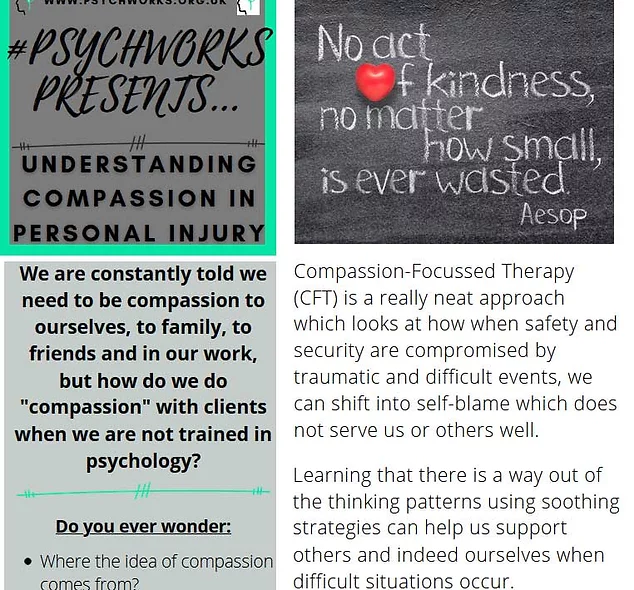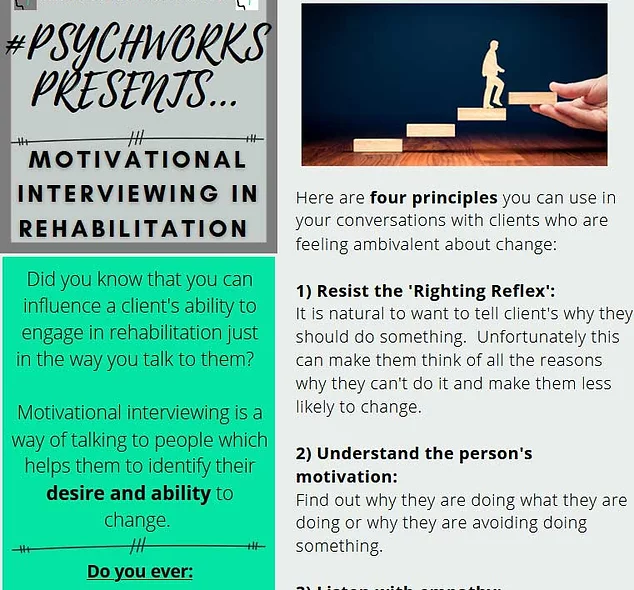We are constantly told we need to be compassion to ourselves, to family, to friends and in our work, but how do we do “compassion” with clients if you are not trained in psychological therapies?
Do you ever wonder:
Where the idea of compassion comes from?
Whether there is any neuroscience behind it?
Why compassion is so crucial to feeling better?
What the benefits are for injury clients?
What “being compassionate” looks like?
If you can be compassionate to others, but not yourself?
Compassion-Focussed Therapy (CFT) is a really neat approach which looks at how when safety and security are compromised by traumatic and difficult events, we can shift into self-blame which does not serve us or others well.
Learning that there is a way out of the thinking patterns using soothing strategies can help us support others and indeed ourselves when difficult situations occur.
At PsychWorks Associates, we want to share our psychological understanding of compassion-focussed therapy to help you be more aware of ways you can use it with clients in the work you do with injury clients and families.
To learn more about Compassion, read on….
First, here’s some science behind Compassion-Focussed Theory (CFT):
Through evolution, we have developed 2 parts in our brain (one for survival and one for self and living choices) where in difficult situations, the surval part takes over and creates protective emotions, like anxiety.
CFT considers Buddhist ideas to teach the brain compassion to promote wellness away from anxious thoughts.
CFT says that in the brain, there are 3 inter-connected systems that need balance for good mental health:
Threat: on high-alert for perceived threat. It reacts with anger, anxiety, and othe protective emotions.
Drive: seeks resources to meet needs and to achieve goals. It reacts with excitement and arousal.
Soothing: kicks in when there is no perceived threat nor any achivements to be had. It reacts with calm and contentment.
CFT focusses on recognising how the soothing state can regulate the Threat-Drive states to restore balance.
OK, but how do you know if your client/family are in Threat-Drive states? Do I know if I need some more compassion in my life?
Reporting feelings of shame or guilt
A narrative that is self-blaming
Critical inner voice that challenges kind or compassionate ideas
Difficulties trusting professionals or care teams
Mental health concerns like anxiety, depression, anger, self-
criticism and rage
Not giving self a break or being able to receive help
Displaying excessive behaviours like spending too much or rushing
off to make decisions independently
An air of being “highly strung”





